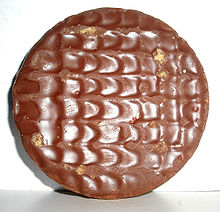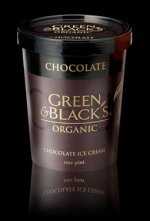Chocolate Adventures in England – Thorntons
March 11, 2010
My little niece was baptized on Valentines Day, Feb. 14, 2010 in a small church near Covent Garden in London.
Previously I had been told the English didn’t celebrate Valentines Day much, but that’s not what I experienced. The chocolate shops and patisseries surrounding the church fully embraced the holiday with window displays decked out in red hearts, flower bouquets, and lots and lots of chocolate!
Most of the time I don’t buy chocolate truffles by the box and off the shelf because I don’t know how long ago those truffles were made. I prefer a really fresh, handmade truffle at the corner shop.
Read more
Trader Joe’s Dark Chocolate Nibs
March 2, 2010
Cocoa (or Cacao) Nibs are made from cocoa beans after they get separated from their thin shells and roasted. The bulk of nibs produced are ground into chocolate liquor, either used as unsweetened baking chocolate or as the main ingredient of chocolate bars and candies.
Roasted cocoa nibs are not for everyone. They taste rather bitter because they are not sweetened. If you can get past the bitterness, you’ll find they do taste rich and chocolaty and have a crunch similar to nuts. In fact, nibs are often used to replace nuts in cookies and granola recipes.
Chocolate Adventures in England – Digestives
February 24, 2010
“Could you go for a chocolate digestive and tea?” – my sister asked me shortly after arriving at her flat in London. There is nothing more refreshing than a digestive and tea after a long flight.

Read more
Troubleshoot Chocolate Tempering
February 18, 2010
Recently I was asked about tempered chocolate that fails to keep a good shine and what can be done to fix that? (See comments on how to temper chocolate page.)
That's a really good question. Concerns about the streaking and the lack of shine make me think about how temperatures, crystal development and the appearance of chocolate are all connected.
Properly tempered chocolate is shiny and uniform in color. When chocolate has streaks and does not shine, it indicates that at some point in the production process, the chocolate solidified without being in a properly tempered state.
Read more
Chocolate Adventures in England – Jaffa Cakes
February 11, 2010
Tonight I find myself sitting in my sister's flat in London, England eating Jaffa Cakes and sipping Frangelico flavored coffee. I am visiting my sister and my brand new niece, only 2 days old.
What is Jaffa Cake?
The Jaffa Cake is a British favorite. The cake is a three layered treat about the size of a cookie. It is made with a bottom layer of sponge cake, a middle layer of orange flavored jelly, and a top layer of rich milk chocolate coating.
Read more
Chocolate and Romance: A Great Pairing
February 8, 2010

Like chocolate, for instance.
Read more


